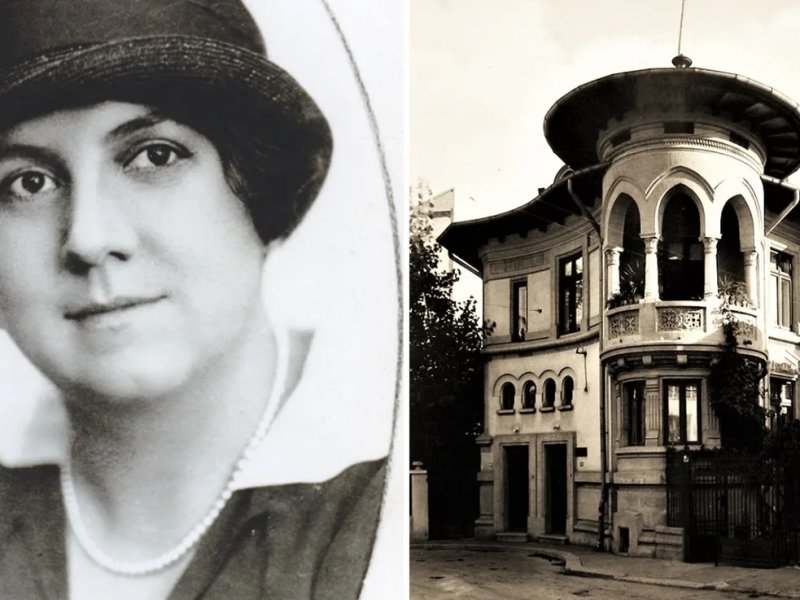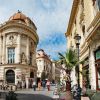The women who shaped Bucharest Portraits from a city whose history was rarely written in the feminine

By Bucharest Team
- Articles
Like many European capitals, Bucharest’s official history has long been told through the names of rulers, mayors, architects, and businessmen. Women appear infrequently—and when they do, it's usually as background figures or symbolic muses. Yet, a closer look reveals a different story: women who shaped the city through architecture, political activism, the arts, and a different aesthetic of living. Their impact is tangible, even if their names remain unfamiliar to most.
Virginia Andreescu Haret – Romania’s first female architect
At a time when few women built more than their own homes, Virginia Andreescu Haret became Romania’s first certified female architect in 1922—and one of the first in the world. Working for the Ministry of Education, she designed dozens of schools and educational buildings across the country, many in Bucharest. Her style combined functionality with understated elegance and a strong sense of urban purpose. She later became Romania’s first female general inspector for public constructions. In a city where public education infrastructure is now fragile, her legacy remains visible in the form of well-planned schools that reflect a vision of citizenship through space.
Calypso Botez – feminist thought in interwar Romania
A jurist, writer, and activist, Calypso Botez was one of the most articulate feminist voices of the interwar period. She didn’t leave behind buildings or public artworks, but her influence on Romania’s modernization was significant. She co-founded the National Council of Romanian Women and tirelessly advocated for equal rights in education, labor, and politics. Today's initiatives for gender equality or domestic violence shelters in Bucharest can be traced, in part, to her groundwork.
Nina Cassian – poetry between censorship and exile
In the 1950s, when socialist realism was mandatory, Nina Cassian wrote veiled, metaphorical poetry that subtly resisted the regime. A sharp literary voice and cultural presence in Bucharest, Cassian refused to be boxed in. She eventually went into exile in the United States in the 1980s, but her poetic voice—feminine, sensual, politically aware—remains one of the strongest in postwar Romanian literature. For a time, Bucharest was both her stage and her cage.
Henrietta Delavrancea – interwar architecture with a human touch
Daughter of writer Barbu Ștefănescu Delavrancea, Henrietta was one of Romania’s most prolific female architects of the 1930s. Her modernist buildings, often with local vernacular influences, show a deep respect for the surrounding landscape. Though many of her most famous works are in Constanța, she also contributed to Bucharest’s development, particularly in the northern districts. She was among the few at the time who saw architecture as not only structure but experience—urban life as something to be felt.
Mihaela Miroiu – critical thought meets public life
A philosopher and public intellectual, Mihaela Miroiu is one of the most influential thinkers in post-1989 Romania. She founded the country’s first academic programs in gender studies and has consistently challenged patriarchal norms in politics, education, and public discourse. The intellectual fabric of Bucharest’s academic and civic life owes much to her influence. In a city where critical thinking is often undervalued, Miroiu has shown that ideas, too, can change a place.
Oana Maria Cajal – art as memory and resistance
Playwright, visual artist, and collage maker, Oana Maria Cajal lives between Bucharest and Montreal. Many of her recent works are dedicated to recovering Romania’s lost cultural memory. Her exhibitions in museums and alternative art spaces in the capital explore themes of exile, identity, and healing. Cajal’s art reminds us that a city is not just infrastructure—it’s also pain, poetry, and remembrance. In a Bucharest that often bulldozes its past, her creations recover the invisible layers.
A city shaped—and reshaped—by women
Bucharest was never just built by men in power. It has also been lived in, challenged, and reimagined by women. Some had access to institutions; others had to fight them. Some left behind tangible marks—a building, a text, a painting; others reshaped the city’s cultural and ethical codes. What unites them is their refusal to be erased.
To truly understand a city, we must listen to the women who shaped it. Even if no streets bear their names, they’re already woven into its structure—often more enduringly than the concrete itself.
Also recommended Successful businesswomen in Bucharest






























